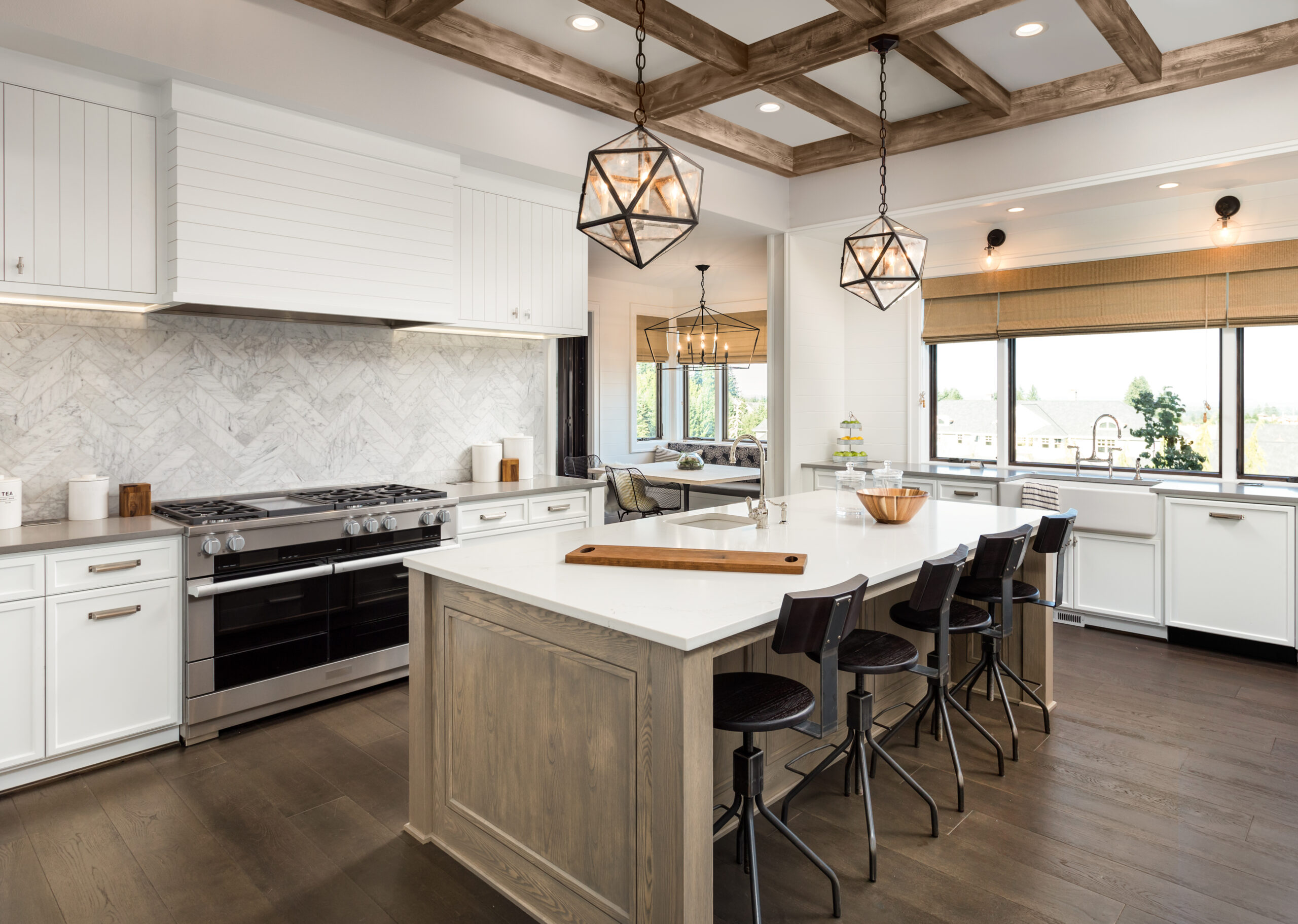A kitchen remodel is an exciting time in a homeowner’s life. Your head fills with visions of what could be – soft close doors and drawers, bright, clean cabinets, more storage, roll out trays, fresh new countertops, beautiful crown details – the list goes on! Amid all of that excitement it is easy for homeowners to steer off onto the wrong path. This is a list of the top 5 things NOT to do during your kitchen remodel.
-
The Drop Line
Every cabinet showroom has what’s called a “drop line” these are cheaper, poorly built cabinets that have an appearance similar to those of higher tier, more sturdily built cabinets. The main reason you don’t want to use them is durability. Yes, the price tag can be tantalizing, and to a homeowner it is hard to know the difference. They look the same as the more expensive lines – you may think – what’s the difference if the sides are built out of particle board versus plywood. It all looks the same!
WRONG
Drop line cabinets are just meant to get the sale, period. A cabinet salesperson may be able to gloss over the fact they they don’t hold up over time but we won’t. Seriously, we’ve performed installs with some drop line cabinets for dealers. Some are better than others but one thing is for certain, they all seem very fragile when we install them. Some even fall apart as we move them through the home.
While not every lowest tier cabinet is bad, in our experience the vast majority have major issues. The last thing you want is to think you’re getting a deal on cabinets and then have it all fall apart a few years down the road.
Think of how much abuse your cabinets take. Pots, pans, heavy plates, tens of pounds of food & dishware. Why would you opt for a poorly built cabinet that can’t sustain that wear and tear?
Our advice is to avoid the cheapest lines of cabinets, and if you can’t stomach the extra cost to put better quality in your home, then don’t even bother remodeling.
If the cabinet dealer you’re working with can’t tell you the difference – find a new dealer.
2. Cramming Everything In
A kitchen is a balance of beauty and functionality. If you overdo it and put to many trendy items in, the end result will be a disaster. We’ve seen kitchen with 3 different types of tile, eccentric tops, and wacky lights. It may seem like a good idea – each of those things might have looked unique and cool individually but when they all come together they look horrid. In our opinion, moderation is beautiful. If you do something eccentric, try limiting it to one or two things. Ask for renderings of the final result. Sleep on it for a week. It’s so easy to get caught up in excitement and try to make your kitchen just like the HGTV showstoppers. But here’s the thing. They make the kitchen look good for a few seconds on camera, you have to live with it for 20 years.
Our advice is to apply moderation to your material selections. Life changes, trends change. Don’t get too eccentric with your selections.
3. Behind the Scenes
I once had a client who said “I want my money to go towards the cabinets- not all the other crap!” Well…I’ve got news for you. The other crap matters. Your plumbing, electrical, and mechanical should not be the part you try to cheap out on. Those behind the scenes puzzle pieces are what make you kitchen function the way it should. And guess what – if one of them fails or is installed improperly – you get to rip everything back apart to fix it. Don’t want to spend the money on a good plasterer/drywaller? Good – our crews will gladly fix it in 5 years when it starts flaking off the ceiling.
There is not one single part of a kitchen remodel, that cheap should be in your vocabulary. Think of your kitchen as an investment. A new kitchen can bring happiness and peace of mind – but not if it’s “cheap”.
4. Not Planning For Hiccups
Things don’t always go according to plan. Especially in remodeling where we have not yet developed the ability to see through walls. You should always be involved in the remodel process. Make sure you bring up your questions, talk to your general contractor, if something doesn’t look right – say something. BUT at the end of the day there are some things we just can’t plan for. Your kitchen sink isn’t vented properly, there were outlets hidden behind the upper cabinets, a major section of subfloor was rotted.
Often times there are additional costs involved with unforeseen problems. Whatever quote you go with, ensure that you have some personal contingency fund set aside for the unexpected. We recommend and additional 10% of your project total. When changes come up, due your due diligence with your contractor to make sure it’s legit but also be confident knowing you planned for the unexpected.
5. Allow Ignorance to Rule
There are a lot of moving parts in a kitchen remodel. The last thing you want is for something unexpected to show up installed in your kitchen. “Where the heck did that faucet come from?” With so many selections – it’s easy to forget which items you chose and which ones still need to be picked out. Our advice is to keep a file of everything you pick out. Even just a word document with pictures of everything will do. Here is a list of the main items you’ll need to make sure you pick out with your designer:
- Cabinets – drawer & door face, hardware (knobs/pulls), crown molding,
- Countertops & backsplash (and grout color)
- Flooring
- Lighting fixtures
- Sink and faucet
- Appliances

